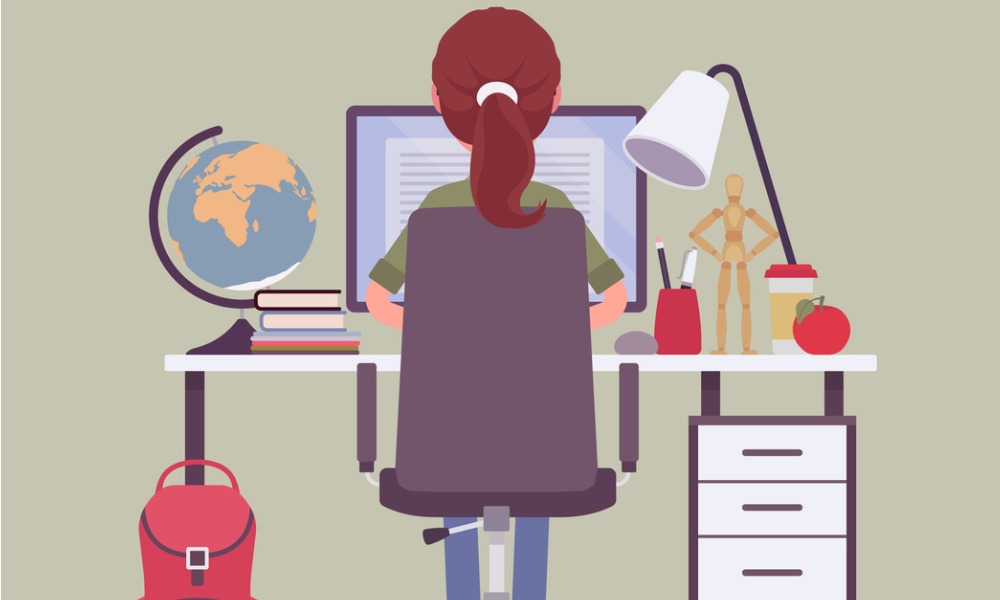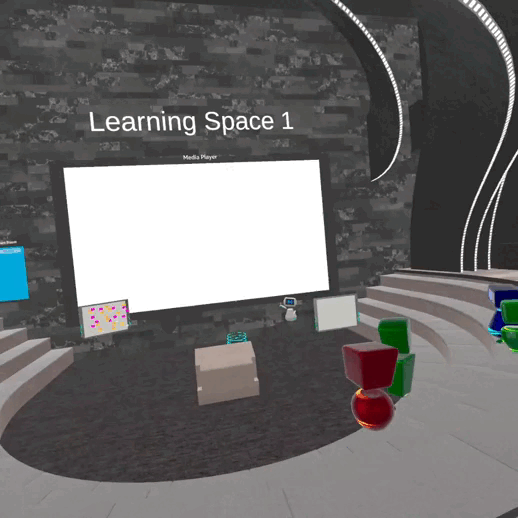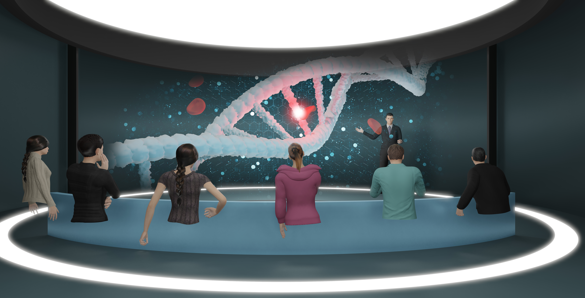Virtuademy is an immersive learning platform designed for schools and universities. No more photocopies, mockups, cardboard prototypes, and backpacks full of books. Virtuademy allows students to interact in a virtual environment tailored to their educational needs, facilitating access to materials.
A year and a half of distance learning
At the end of February 2020, the Italian government announced the closure of schools due to the pandemic. What was supposed to be just a couple of weeks turned into a whole semester. Italian students lost 65 days of school compared to an average of 27 in other Western countries*. At least 3 million students in Italy were not involved in distance learning due to a lack of internet connection or adequate devices at home. Even the 2020-2021 school year was not spared from distance learning. The fear is that over time, these interruptions can lead to educational inequalities.

How education has changed in Italy in the past year
The rush towards distance learning, in addition to introducing video call platforms among students, triggered combinations of digital and non-digital tools.
From television and radio content supporting schools to online communication (email, social media, web messaging), and offline communication (SMS, phone calls) by teachers.
According to a report by UNICEF and the Catholic University (February 2021) based on a sample of 1,028 families scattered throughout Italy, it is evident that students relied on online communication for 89% and offline communication for 74%. Among other resources: print materials (books, workbooks) supported 73% of activities, while content provided by television or radio broadcasters supported 33%. What remains to be understood is how effective these tools have been in students’ education.
Every cloud has a silver lining. A research study promoted by the Ministry of Health, the Ministry of Education, and “Con i Bambini” and conducted by the “Fondazione Zancan” highlights an important finding. On one hand, there was a certain difficulty for students at all levels of education in following lessons through distance learning. On the other hand, the study recognizes the push towards greater student accountability. It fostered autonomy in organizing their studies and, at the same time, provided the advantage of flexible schedules and the promotion of a different concept of “schooling,” based on the use of technology as an ally in education.
Virtuademy: A Project Connected to the Smart City Concept
The research and development of Virtuademy began even before the educational emergency caused by Covid, with the “Call Hub Ricerca e Innovazione” grant funded by the POR FESR 2014-2020 resources from the Lombardy Region in 2019. In partnership with the Politecnico di Milano, which brings academic and educational expertise, complementing our technological know-how, together with Vodafone within the Base 5G project.
It is interesting to see how the grant arrived when education was still conducted in person, in classrooms. In a way, it had already anticipated the need to innovate learning.
The project is developing at a time when distance learning has encountered a series of challenges that need to be overcome. For example, we think of the so-called “Zoom fatigue” and that sense of exhaustion experienced after many hours of video calls.
In a recent blog post, we addressed how communication on Zoom and similar platforms poses significant challenges in maintaining attention levels. The emotional engagement of individuals is inevitably lower. We have seen how spatial collaboration, which blends physical and digital elements, has provided positive contributions in many corporate settings and contexts. For this reason, our research and development efforts aim to make training and communication activities more engaging, thanks to the impact of immersive technologies on emotions. And all of this applies not only to the world and processes of private companies but also to the public administration, as the grant from the Lombardy Region has opened doors in that area as well.

From Distance Learning to Immersive Education
Immersive experiences bring back all the interactions that were lost with distance learning. First and foremost, the sense of presence and interaction with the surrounding environment.
AR and VR technologies “trick” our brains into believing that we are somewhere else, in a place that doesn’t exist.
The emotion experienced through the use of these technologies is a direct emotion, the same as we would feel in real reality.
An emotion experienced through any other medium (from a computer screen to reading a book) is an indirect emotion: in this case, our brain has to process and interpret the information to imagine something and make us feel that particular emotion.
With virtual reality, the brain doesn’t have to reinterpret anything: we see exactly what we would see in reality. A lesson learned from books is completely different from an immersive experience.
For example, Google has developed Google Expeditions, an immersive app with over 1,000 VR experiences that offers teachers and students the opportunity to travel to remote places beyond the classroom without actually leaving it. To increase engagement and understanding of the content, the AR library brings 3D objects into the classroom space, helping to bring abstract objects to life, such as tornadoes or beehives.
Alternatively, Labster VR offers over 100 types of virtual laboratories for schools and universities.
Having a virtual laboratory to provide students with a safe and interactive environment for STEM learning is certainly a great asset.
For example, in physiology labs, students can participate in a virtual clinical trial and study the acute and chronic physiological effects of high-intensity interval training on a sedentary lifestyle.
Another example is the app Waypoint EDU, where students can explore customized augmented reality scavenger hunts. After teachers have created the scavenger hunt path, they can share it with nearby devices or through email or SMS. This extends the immersive content through viewers, allowing all students to actively participate.

Virtuademy: immersive training and innovative experience
The goal is to deliver educational content in the form of immersive experiences, using a platform from which the teacher can customize the lesson.
With Virtuademy, it’s like immersive training can be built brick by brick, as the teacher “creates” the lesson by uploading content to the library of materials to be presented during the immersive lesson. Files, videos, 3D models: interactivity knows no bounds.
At this point, the teacher can choose whether to provide synchronous or asynchronous training.
With synchronous training, the teacher sends a calendar appointment to the students, who connect at the predetermined day and time to simultaneously follow the immersive lesson.
As for asynchronous training, students independently log in to the platform, with the ability to download the available content.
We are at the peak of an exciting new phase of connection, interconnection, and inspiration for students. With the ability to experience new worlds, explore unreachable places, and provide a visual context for abstract concepts, VR, AR, and XR can make learning more playful and impactful, sparking curiosity and interactivity with the world around us.
With the Virtuademy project dedicated to immersive training for more modern education, we are enriching our platform to create virtual worlds for remote education.
“If I listen, I forget. If I see, I remember. If I do, I understand.”
Confucius
*Data source: “Learning at a Distance – Children’s remote learning experiences in Italy during the COVID-19 Pandemic” report by Giovanna Mascheroni; Marium Saeed; Marco Valenza; Davide Cino; Thomas Dreesen; Lorenzo Giuseppe Zaffaroni; Daniel Kardefelt Winther.


